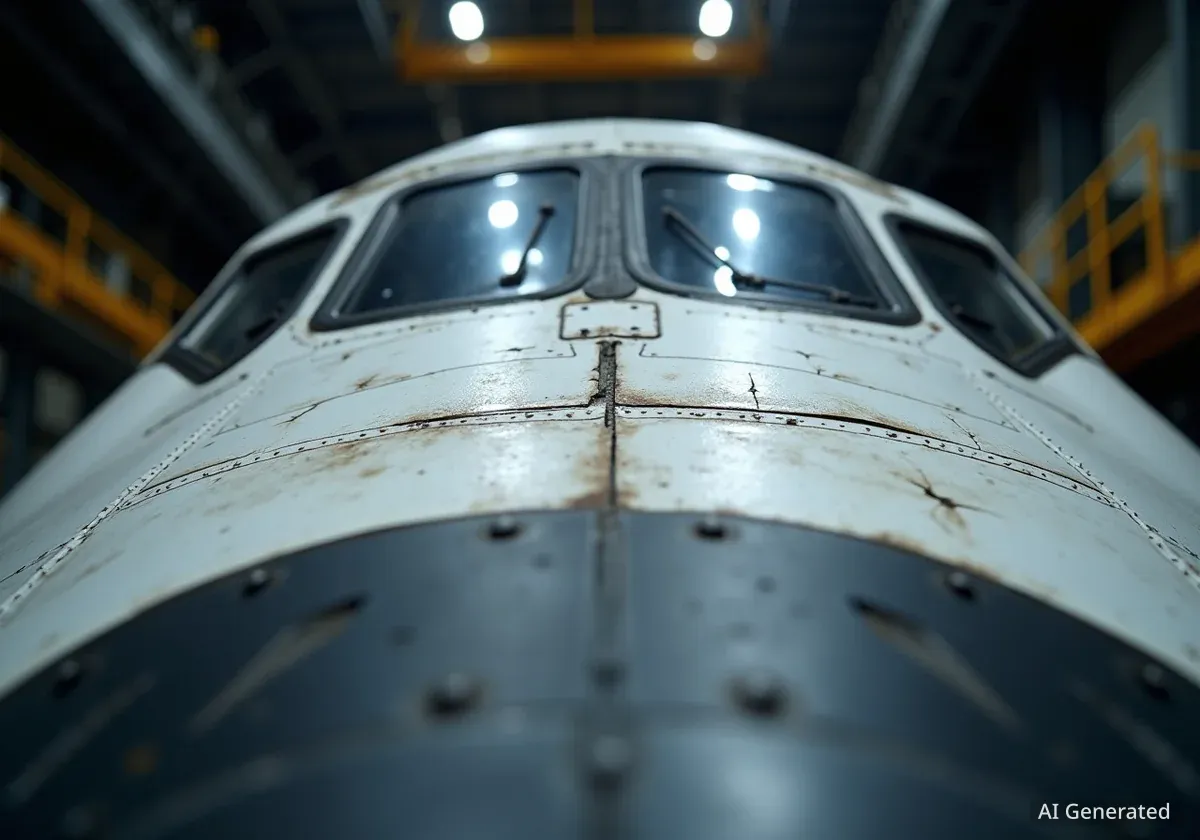A proposal to relocate the historic Space Shuttle Discovery to Texas has encountered significant challenges, with the Smithsonian Institution warning that the move would require dismantling the orbiter and could cause irreparable damage. The estimated cost for the complex relocation is nearly double the amount budgeted by lawmakers pushing for the move.
Key Takeaways
- The Smithsonian Institution states that moving Space Shuttle Discovery would necessitate its disassembly, a process it was never designed for.
- Officials estimate the relocation cost at $120 to $150 million, far exceeding the $85 million allocated in a proposed bill.
- Experts warn that taking the orbiter apart could destroy its historical value by permanently damaging its delicate heat-shield tiles.
- Texas lawmakers argue Houston's Johnson Space Center deserves the shuttle due to its historical role in the space program.
A Legislative Push for Relocation
The effort to move Discovery is led by Texas lawmakers, including Senators John Cornyn and Ted Cruz. They introduced the "Bring the Space Shuttle Home Act," which allocates $85 million to transport the orbiter from its current location to Space Center Houston.
Proponents of the move argue that Houston was unfairly overlooked when the retired shuttle fleet was distributed to museums over a decade ago. "Houston played a critical role throughout the life of the space shuttle program," Sen. Cornyn stated earlier this year, suggesting political considerations influenced the original placement decisions.
The Johnson Space Center served as Mission Control for all shuttle flights, a point lawmakers emphasize as a key reason for housing one of the historic vehicles.
The High Cost of Moving a Legend
In response to a White House request, NASA and the Smithsonian conducted a cost analysis for the proposed move. Their findings present a significant financial obstacle.
Cost Discrepancy
The joint estimate places the minimum cost for relocation at $120 million to $150 million. This figure does not include the additional expense of constructing a new, climate-controlled exhibit building in Houston to house the shuttle.
The estimated amount is substantially higher than the $85 million budget proposed in the legislation. This gap raises questions about the financial feasibility of the project without additional funding.
An Engineering and Preservation Crisis
Beyond the financial concerns, the Smithsonian has raised serious alarms about the physical risks to the orbiter itself. In a letter to congressional leaders, the institution detailed the unprecedented nature of such a move.
Space Shuttle Discovery was not designed to be taken apart. Its structure is a complex, integrated system of wiring, connectors, and, most critically, a delicate thermal protection system.
"Discovery is the most intact shuttle orbiter of the NASA program, and we remain concerned that disassembling the vehicle will destroy its historical value," the Smithsonian letter stated. "In particular, irreparable damage to the Shuttle tiles will occur in disassembly, which were critical to the Shuttle's unique reusability."
Each of the orbiter's ceramic tiles was uniquely fitted to withstand the intense heat of atmospheric reentry. Experts believe that removing them would likely cause permanent damage, compromising the authenticity of the most-flown vehicle in the shuttle fleet.
Discovery's Storied Career
Space Shuttle Discovery (OV-103) is a veteran of space travel. Between its first mission in 1984 and its last in 2011, it completed 39 missions, spending a total of 365 days in orbit. It is celebrated for deploying the Hubble Space Telescope and for its role in the International Space Station program.
Logistical Nightmare Without a Carrier
The logistical challenges of moving an object measuring 122 feet long with a 78-foot wingspan are immense. When Discovery was delivered to the Udvar-Hazy Center in 2012, it was flown from Florida aboard a specially modified Boeing 747 Shuttle Carrier Aircraft (SCA).
Why Flying is No Longer an Option
The original carrier aircraft have since been retired from service, making an airlift impossible. This leaves ground and sea transport as the only viable, though highly complex, alternatives.
An independent analysis by the group 'Keep the Shuttle' outlined the daunting task of moving the orbiter by land to a navigable waterway.
- A 25-mile road journey through Northern Virginia to reach the Potomac River.
- Reinforcement of local roads with steel plating to handle the weight.
- Removal of an estimated 400 trees, utility poles, traffic signs, and streetlights.
- A 2,000-mile journey by barge from the Potomac River to Texas.
These logistical hurdles would be required even before considering the complex process of loading the massive orbiter onto a barge. The combination of disassembly and a difficult surface journey presents a multi-faceted challenge for engineers and preservationists.
The Original Shuttle Distribution
The current debate stems from the original 2011 decision by NASA on where to display the retired orbiters. The agency aimed to place them in locations with historical ties to the space program.
The final placements were:
- Atlantis (OV-104) at the Kennedy Space Center Visitor Complex in Florida.
- Endeavour (OV-105) at the California Science Center in Los Angeles.
- Discovery (OV-103) at the Smithsonian's National Air and Space Museum.
- Enterprise (OV-101), the prototype orbiter that never flew in space, at the Intrepid Sea, Air & Space Museum in New York City.
Officials in Texas, along with others at locations like the National Museum of the U.S. Air Force in Ohio, expressed disappointment at being excluded. The placement of *Enterprise* in New York City has been a particular point of contention for Texas lawmakers, who argue Houston's contributions to human spaceflight were more significant.
While some have suggested Texas pursue the orbiter *Enterprise* instead, its history as a non-spacefaring test vehicle makes it a less desirable artifact than the highly accomplished *Discovery*. The complex debate over Discovery's future now weighs the historical significance of its potential new home against the risk of destroying the very history it represents.





